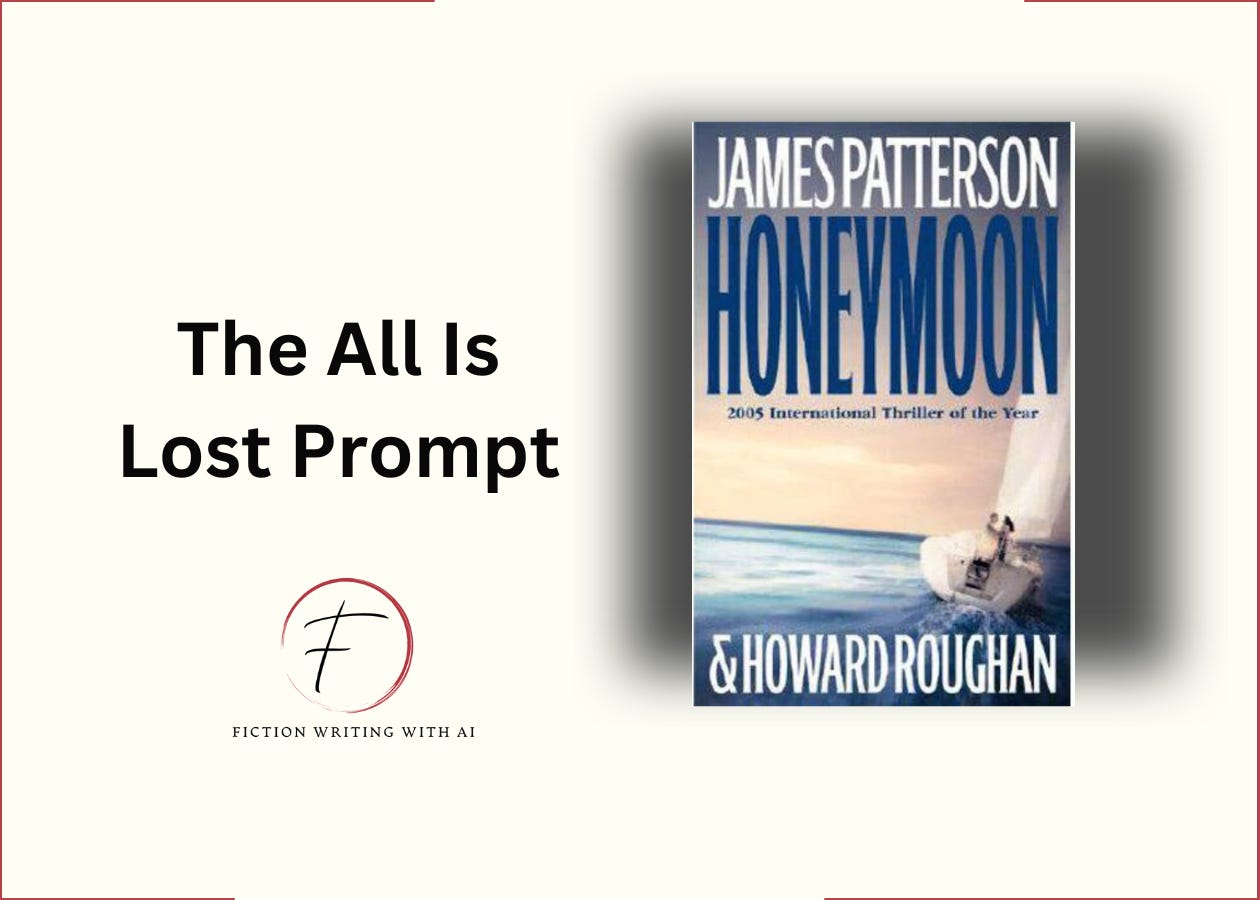James Patterson’s Honeymoon: A Blueprint To Hitting Your Reader In The Feels
And Leaving Your Hero With No Way Out
Hey there!
Today, we're diving into James Patterson's "Honeymoon" to pull back the covers on a gripping "All Is Lost" moment.
By the end, you'll have a step-by-step guide to draft a scene that hits your readers right in the feels.
What's The "All Is Lost" Moment?
The All Is Lost moment is the lowest point in your main character's journey.
If you’ve been following along the last few weeks as we walk through all 15 of Save The Cat beats, this beat is in the 2nd Act of your story and it follows the Bad Guys Close In scene. In this beat, everything your hero has gained in your story either slips through their fingers or suddenly feels meaningless.
It’s the moment the protagonist realizes they’re worse off than if they’d never started on the journey at all.
Blake Snyder refers to this as the “Whiff of Death”—where something or someone crucial dies, either literally or metaphorically. This loss paves the way for something new to emerge. For example, in When Harry Met Sally, this moment comes when they sleep together and risk losing their entire friendship.
When this point hits, it seems like there’s no way out.
James Patterson’s Honeymoon
Before we dive into the "All Is Lost" moment, let me give you a rundown of the book.
Honeymoon is a thriller that follows two main characters:
Nora Sinclair: A beautiful interior decorator who seduces wealthy men and kills them for their money.
John O'Hara: An FBI agent posing as an insurance investigator to catch Nora.
The story is a cat-and-mouse game between these two, with each trying to outsmart the other.
The “All Is Lost” Moment
As O'Hara gets closer to catching Nora, he finds himself falling for her charms.
The "All Is Lost" moment hits when O'Hara meets Nora at her cabin on Candlewood Lake. He thinks he's in control, but Nora has poisoned him. O'Hara ends up locked in the bathroom, violently ill and fighting for his life, while realizing Nora has known his true identity all along.
Here's how Patterson builds up this moment:
Deceptive calm: O'Hara arrives thinking he's in control. Patterson lulls us into a false sense of security with casual dialogue and sexual tension.
Swift reversal: Without warning, O'Hara feels "deathly ill." Patterson's abrupt shift in tone jolts the reader, mirroring O'Hara's shock.
Escalating danger: O'Hara locks himself in the bathroom. Patterson ratchets up tension by confining his protagonist in a small space.
Visceral distress: Patterson doesn't shy away from graphic details. O'Hara is "violently convulsing," "vomiting," and "coughing up blood." These vivid descriptions make the reader feel O'Hara's pain.
Mental anguish: As O'Hara realizes Nora has outsmarted him, Patterson adds psychological torment to the physical agony.
Patterson's genius lies in how quickly he flips the script. In the span of a few paragraphs, O'Hara goes from confident agent to desperate victim.
Let’s look at how he triggers the readers emotions.
The Emotional Beats
What makes this scene so effective is how Patterson subverts expectations.
He's spent the novel building O'Hara as a capable FBI agent, only to strip him of all power in this crucial moment. This reversal heightens the emotional impact, leaving the reader as off-balance as O'Hara himself.
Here’s how it breaks down:
Anticipation: O'Hara arrives at the cabin full of purpose, ready to confront Nora.
Confusion: When illness hits, O'Hara's bewilderment is palpable. Patterson uses short, choppy sentences to convey his disorientation.
Panic: As O'Hara's symptoms worsen, Patterson cranks up the internal monologue, letting us feel O'Hara's rising fear.
Desperation: O'Hara's attempts to call for help are frantic. Patterson uses action-packed sentences to convey urgency.
Humiliation: The realization that Nora has known his identity all along is a crushing blow. Patterson twists the knife by having Nora mock O'Hara.
Want to read the book, yet?
Apply Patterson’s “All Is Lost” Moment To Your Story
So, how do you take Patterson's blueprint and make it your own?
Start by asking yourself these questions:
Keep reading with a 7-day free trial
Subscribe to Fiction Writing With AI to keep reading this post and get 7 days of free access to the full post archives.




